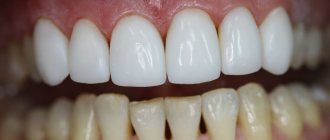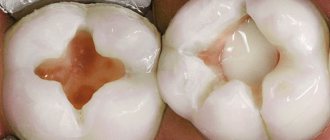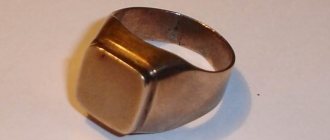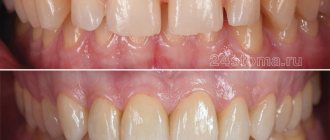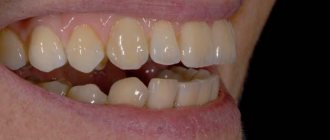General information about zirconium
This element belongs to the secondary subgroup of the 4th group of the 5th period of the periodic system of D.I. Mendeleev - atomic number 40. Zirconium in its usual form is a shiny metal, which is distinguished by a silver-gray color, is ductile and resistant to corrosion. Compounds of this substance are widespread in the lithosphere. In nature, zirconium compounds are known exclusively with oxygen in the form of silicates and oxides.
Despite the fact that zirconium is a trace element, up to 40 miners are known in which this substance is present in the form of salts and oxides. This is a universal gemstone, but this opinion is wrong. Although, in appearance it is even similar to a diamond. A few facts about this substance:
- Zirconium is produced only in laboratory conditions, and the mineral zircon is used as the main component.
- Although zirconium is a transparent stone, due to the use of additional impurities, various shades are obtained.
- It is used in jewelry as a replacement for minerals and jewelry, due to which the price of the final product becomes significantly lower.
Many people are confused and believe that cubic zirconia, zircon, zirconium are the same substance. In fact, they are all different, just similar in composition to each other:
- Zirconium is a metal that is similar in appearance to steel.
- Cubic zirconia is a man-made brilliant crystal. In terms of external characteristics, it is similar to a diamond. Zirconium oxide is used for production - the process is carried out under the influence of temperatures above 2.5 thousand degrees.
- Zircon is a stone that is similar to gold. It is of natural origin and looks expensive.
When should it be used?
The indications for the use of zirconium for treatment have not yet been established, although it is indispensable as an excellent material for medical instruments and implants.
This metal is used in chemical engineering as a corrosion-resistant material. Its additives deoxidize steel and also remove sulfur and nitrogen from it. Powdered zirconium is used in the production of ammunition and in pyrotechnics. Zirconium sulfate is a tanning agent that is widely used in the leather industry.
History of zirconium stone
In terms of its attractiveness, this stone is not inferior to many precious analogues. It has been used since ancient times. During the dominance of Ancient Persia, all types of stones were almost devalued with the exception of transparent ones and those that had the characteristic shine of a diamond. In Asian countries, the stone became a talisman for local residents and visiting Russian merchants, who took zirconium products (especially beads) to their home to supplement their daughters' dowry.
In Europe, this material was not given much importance until the 19th century. Only swindlers and swindlers of those times sold cut transparent zirconium products under the guise of diamonds to high society ladies who did not understand jewelry. In addition, it was confused with sapphire, tourmaline and topaz due to its abundant color palette, and colorless stones began to be called “Ceylon diamonds” - they were cheaper and were considered second-class.
In the industrial field, this type of stone began to be used only in the 30s of the last century - widespread use was significantly limited by high costs. Today, zircon and its various compounds and alloys are used in construction, metallurgy, medicine and even nuclear energy. Bone and dental prostheses and surgical instruments are made from this mineral.
In the last century, Soviet scientists, trying to grow an artificial diamond, managed to grow artificial zirconium - it was called “zircon” or “cubic zirconia”. After the discovery was made, the cost of the stone decreased significantly, because... artificial synthesis always causes serious damage to any jewelry. Zirconium is not inferior in its characteristics to many precious stones, but for several decades it has occupied a niche in the middle price category.
How to distinguish a fake from a real zircon?
The analysis of precious stones and metals is carried out in the gemological center. The presence of a certificate from this organization serves as a guarantee of the authenticity of jewelry materials. Jewelers purchasing stones for their work may have such a document. But how can you understand that the product you are purchasing is made of the material named in the certificate, and that it corresponds to the stated price?
It's no secret that some unscrupulous jewelers often pass off cubic zirconia as natural diamonds and zircons, and sell cut zircons as diamonds. Transparent zircons are very rare, and they are not much cheaper than diamonds, so they are rarely passed off as the “king of stones”. But cubic zirconia in this regard is an excellent material.
It is only at first glance that the stones are absolutely identical. If you look closely, you can see inclusions and voids in the zircon. Unlike diamond and cubic zirconia, even the most transparent zircon has a yellowish-golden hue due to these formations. That is why in Persia it was called golden. Cubic zirconia has an even structure and even shine. In contrast, zircon has a low density and, accordingly, lighter weight.
Natural stones containing zirconium are mostly radioactive. For example, green zircons and black eudialytes should not be worn on the chest or neck. Earrings made from these stones can also pose a health hazard.
Transparent and golden zircon has minimal radioactivity, but the device senses it and can indicate it as a difference from “zero” cubic zirconia.
Types of stone
Zircon is rightly considered one of the oldest precious minerals on Earth, because. Scientists have found that the age of this element reaches 3-4 billion years. Currently, several types of zirconium are isolated. The main criterion for this division is the variety of stone colors. The following varieties are distinguished:
- Starlit. A transparent stone, obtained by firing, has a bluish or blue tint.
- Malacon. It is dark brown in color and contains a small dose of radiation.
- Hyacinth. A transparent mineral characterized by brown, orange, and red colors.
- Matar Diamond. Transparent, colorless, extracted from the depths of the island of Matara - hence the name of this variety.
- Jargon. A mineral characterized by a straw, yellow or slightly golden color.
In addition, zirconium can be presented in the form of metal or powder - the scope of their application often differs. For example, the first is used for making jewelry, and the second is used in the medical and industrial fields. More information about these varieties:
- Hard metal. It has a shiny silver-gray tint and has a high degree of plasticity.
- Powder. A characteristic feature is the presence of small granules. Has a dark blue tint.
When heated, Zirconium can change color, allowing jewelers to give finished products a variety of shades. This mineral is:
- white (transparent, the most common);
- blue;
- blue;
- black (extremely rare);
- olive;
- green;
- pink;
- red;
- yellow (has the most pronounced radioactive background);
- brown (weak radiation);
- orange;
- purple.
Physical and chemical properties of zirconium
The structure of the mineral often contains impurities of other elements, for example, iron, copper, calcium, titanium, zinc, etc. More often, zircon is transformed into pyramidal or prismatic crystals. The mineral often contains uranium, which is why specimens with high background radiation are found. In terms of hardness, it is inferior to the competitors of its group - it is not durable against impacts or tearing. If stored carelessly, chips will fly off the stone, which will ruin the original aesthetic appearance. Physical and chemical properties:
- When intensely heated, it changes color, so the final product can have dark brown, bright turquoise and other shades. Over time, the shades obtained by thermal exposure fade and disappear completely.
- Cannot be cold processed under pressure.
- Instantly begins to oxidize at temperatures of 200-400℃.
- Great chemical resistance. Does not dissolve in acids, alkalis, does not corrode. When entering the human body, it does not interact with organs and tissues.
- The mineral produces dust, which becomes a threat to human life. This is due to the fact that it is easily flammable even from interaction with air.
- It melts at a temperature of 1825℃, and boils at 3500℃ and above.
- Under normal storage conditions, when the temperature is about 20℃, the density of the material is 6.45 g/cm3.
Tags
about zirconium stone zirconium properties of zirconium obtaining zirconium properties of zirconium zirconium is used 7.1. Zirconium properties of zirconium 9. Zirconium is zirconium.its properties chemical properties of zirconiumHealing properties of zirconiumMagical properties of zirconiumas a metal orHard metal.with a metallic lusterwith a metallic or chemical propertiesand chemical propertiesGreat chemical resistance.
oxidation articles solid dioxide substances pure composition atomic air such various site degree content physical interesting source
Methods for obtaining zirconium
A stone with a metallic luster and a variety of shades is obtained experimentally in specialized laboratories. It is based on zircon, the main deposits of which are located in Australia, Brazil, Vietnam, Thailand, Sri Lanka and some other countries of the world. Synthetic stone is obtained in one of the following ways:
- Fusion with soda or soda. The process is carried out at a temperature of 500 to 600℃.
- Chlorination with carbon. Performed at a temperature of 900-1000℃.
- Fusion with potassium. Performed at 900℃.
- Sintering with lime or calcium carbonate. Carried out at 1100-1200℃.
Place of Birth
The top three countries in terms of raw material reserves are Australia, South Africa, and Russia. Large massifs of the rock are located in Brazil, the USA, and India.
Russia accounts for a tenth of global reserves:
- Most are concentrated in the European part (Murmansk, Tambov, Nizhny Novgorod regions).
- Beyond the Urals these are the Tomsk and Chita regions.
- An inexhaustible reserve is represented by the Khibiny syenites on the Kola Peninsula.
In the USA and Madagascar, samples of zircon of jewelry or collection grade are found. In the Khibiny there are eudialytes.
The healing properties of zirconium
Companies specializing in the manufacture of bracelets began to add particles of the Zirconium element to their products in order to give their products medicinal qualities in order to increase their sales. The bracelets supposedly lower blood pressure. It is believed that the stone can give strength and vigor throughout the day and ensure sound and healthy sleep at night. It does not change its properties when exposed to acids, therefore it is often used in the manufacture of medical instruments and equipment. More information about medicinal properties:
- accelerates wound healing;
- prevents the formation of pus;
- good antiseptic;
- has an antimicrobial property, which prevents the penetration of various infections into the body;
- prevents the penetration of radiation;
- helps relieve allergy attacks.
- Vegetovascular dystonia: symptoms and treatment of VSD in adults and children
- How to lose 10 kg in a week at home
- Vitamins with zinc
Many types of stone, according to experts in the field of lithotherapy, have a positive effect on the functioning of the thyroid gland and endocrine system. At the same time, different properties are attributed to different colors:
- Black. Helps overcome the effects of hypothermia and colds.
- Yellow and red. Increase appetite and leukocyte production.
- Brown. Able to get rid of accumulated waste.
- Blue and blue. They help remove extra pounds, improve the functioning of the digestive tract, and normalize stool and appetite. The same properties are attributed to transparent minerals.
Impact on humans
Zirconium is not synthesized by biological organisms, but can be ingested from the air or with food.
Biological effects
The metal has found medical use in the following qualities:
- Antiseptic – stimulates wound healing, protects against infections and putrefaction.
- Antiallergen – smoothes out the manifestations of allergies.
- Radiation protection.
Healers claim that metal earrings heal skin, hypertension, arthrosis, and arthritis.
Deficiency/excess
It is impossible to “poison” zirconium from food: it is contained in microdoses.
Exposure to metal dust among workers at metallurgical and mining enterprises can be dangerous.
Symptoms of intoxication:
- Skin irritation.
- Pneumonia.
- Lung diseases.
The metal accumulates in soft tissues. The course of treatment includes measures to intoxicate the body.
Nutrition
Lamb, nuts (nutmeg, pistachios), and legumes are saturated with zirconium. It is found in chili peppers, vegetable oils, and cereals (oatmeal, rice, millet).
Every day a person needs 350 - 750 mcg of the element, depending on age and body weight.
Where is zirconium used?
The main area of application of the mineral is jewelry making. Products that are decorated with it are distinguished by their aesthetic and attractive appearance, because in beauty it is not inferior to a diamond. Earrings and necklaces with cubic zirconia are especially in demand. In addition, this stone is often used as a dummy on jewelry counters. Other applications:
- Based on this element, various alloys are made. They are used in some industries, for example, in the manufacture of structural materials, nuclear reactors, aircraft parts and other parts.
- Zirconium is found in superconducting magnets and is often used to oxidize alloys.
- The powder of this substance is used for the production of pyrotechnics.
- Participates as one of the elements in the composition of fire-resistant coatings for massive and complex equipment. The use of Zirconium in this case justifies the investment, due to which this substance is becoming increasingly popular in the industrial field - in jewelry it is being replaced by cubic zirconia.
- Another area of use is optics, required in aggressive environments and at high temperatures. For example, this is sending a spacecraft to other objects where the temperature jumps are more than 100 degrees in the sun and during a period that glass cannot withstand for a long time.
Zirconium in jewelry
An important feature of zirconium for jewelers is its lower hardness compared to diamond - 7.5 units on the Moss scale. When cutting a mineral, its insertion into the product is done carefully, because Careless handling will result in chips and scratches on the surface. For this reason, products with this stone require careful handling when worn. The appropriate cut allows this mineral to be no worse than fabulously expensive diamonds.
The zirconium group of stones is found in almost all modern jewelry. These gems are often framed in rings and rings. They shine in tiaras, earrings, necklaces, and wedding ensembles. They are often used to decorate pendants and pendants. The lion's share of gold jewelry with zirconium gems is produced in Sri Lanka, near one of the places where the mineral is most concentrated. When buying a product with zirconium, it is important to distinguish a genuine stone that has the following qualities:
- multifaceted refraction of light;
- the presence of a luster similar to metal or diamond;
- upon careful examination (preferably with a magnifying glass), inclusions will be visible in the gem;
- cubic zirconia, which is cheaper, is heavier than zirconium of the same size.
Swarovski crystals
Due to the fact that in recent years Swarovski crystals have become real stars of the jewelry market, even low-quality glass in cheap jewelry has begun to speculate on their name. But real Swarovski crystals are flawless and cost a lot of money. They are distinguished by perfect edges, absence of defects, clouding and chips.
The peculiarity of Swarovski crystals is the material from which they are made. This is clear and carefully crafted crystal. It is created with the addition of potash, quartz sand and red lead. All components are mixed in secret proportions, and the most important nuances of the technology are kept strictly secret by the creators, so the material of the crystals is unique.
For better assimilation of information, we will summarize:
- Cubic zirconium and cubic zirconia are the names of the same stone, which is created artificially;
- Zircon is a natural stone that has an external resemblance to cubic zirconia and diamonds;
- Swarovski crystals are high quality refined artificial crystal.
All these stones have one thing in common - they are used in the jewelry industry as cheaper analogues of diamonds. In the Zlato.ua catalog you will find the brightest jewelry with cubic zirconias, zircons and, of course, Swarovski crystals.
The magical properties of zirconium
Amulets, pendants, talismans and other jewelry made from Zirconium stone have become widespread. It has long been considered endowed with the ability to bring wealth and success to its owner. In ancient times, the mineral was the property of sages; it was believed that it brought them knowledge of the future, the gift of insight and the ability to penetrate the thoughts and inner world of other people. Worn as an amulet, zircon served as protection against liars and unkind people, and developed observation and memory.
The Zirconium mineral has many magical properties. In ancient India it was believed that he was able to control the sun and moon. This stone is widely used in various areas of industrial production; moreover, it is considered an ideal talisman for businessmen, intellectual workers, and travelers. It can even serve as a protective amulet for lovers, strengthening the spiritual and emotional connection between people. A hyacinth amulet will help travelers and military personnel maintain their health and life.
Zirconium in astrology
All kinds of pendants, jewelry, talismans with zirconium gems are suitable for many zodiac signs. It is ideal for Aries, Capricorn, Aquarius, but it is not suitable for Taurus, Libra, Sagittarius, Cancer, more details:
- A stone with a metallic sheen is especially suitable for Aquarius. It will help them develop intuition, aesthetic taste, and the ability to analyze. Aquarians can wear jewelry made from different types of mineral, but yellow, gold or blue gems are ideal.
- The zirconium mineral will also help Aries to reveal its magical properties. It will help them develop attentiveness and caution. People with the sign of Aries are recommended to wear rings made of golden or red colored gemstones.
- Capricorns are better off giving preference to blue stones. It is better to wear rings with such a mineral on the left hand - this way the magical connection with a person with the Capricorn zodiac sign will be maximum.
- Zirconium gems are not recommended for Sagittarius, Taurus and Libra just because these zodiac signs are often selfish. They are also not suitable for Pisces and Cancers, who tend to concentrate on themselves.
Power consumption
The alloy of aluminum and zirconium has many positive characteristics and is therefore successfully used in the energy industry. The fact is that steel and copper wires weigh quite a lot, and often old supports cannot withstand such a load. In 1960, a group of scientists in Japan produced a series of aluminum and zirconium alloys. They determined that such a material can be used for a long time at high temperatures (150-230 ° C) and at the same time it will be quite light. This allows it to be used for the manufacture of high-temperature wires. This increases the reliability and efficiency of electrical networks.

